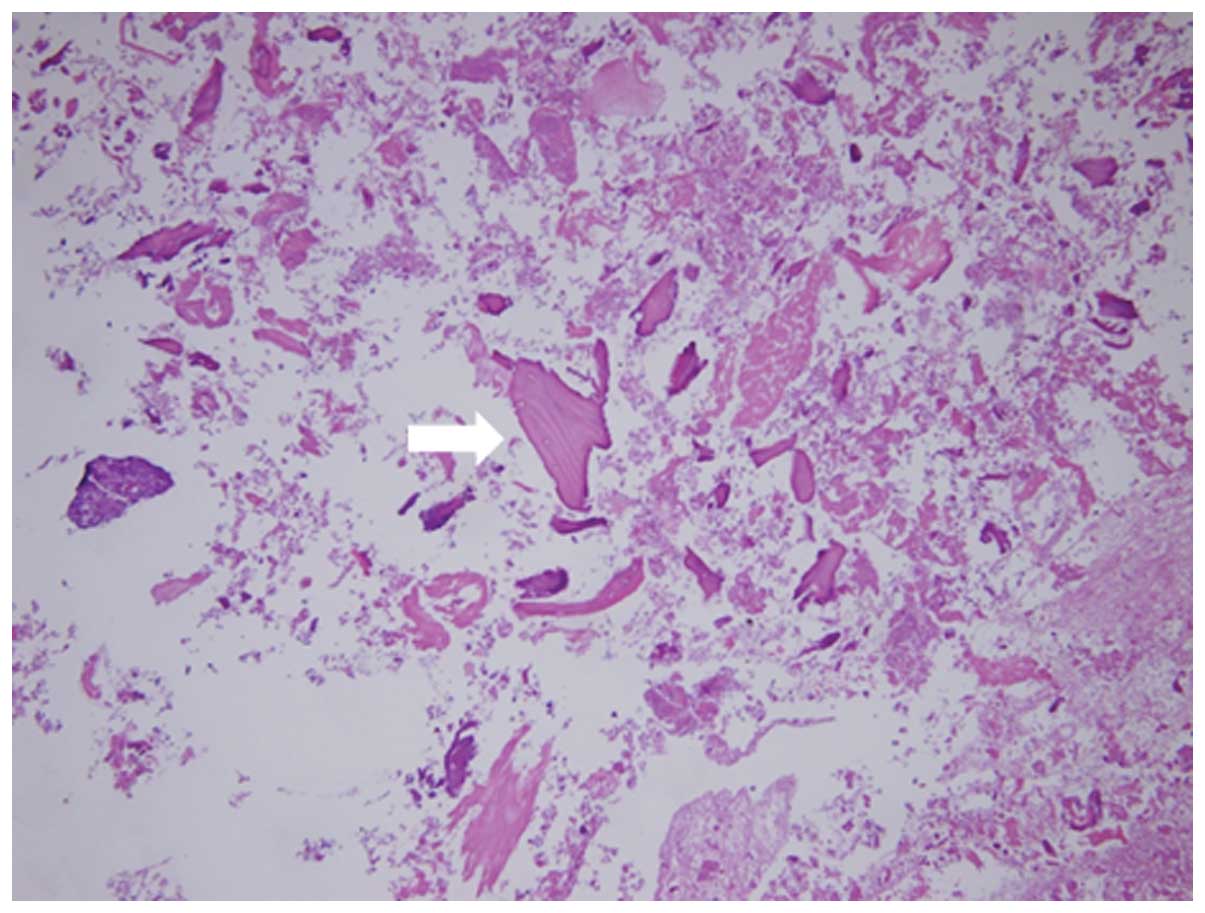Leg lymphedema caused by iliopectineal bursitis associated with destruction of a rheumatoid hip joint: A case report
- Authors:
- Published online on: August 2, 2013 https://doi.org/10.3892/etm.2013.1243
- Pages: 887-890
Metrics: Total
Views: 0 (Spandidos Publications: | PMC Statistics: )
Total PDF Downloads: 0 (Spandidos Publications: | PMC Statistics: )
Abstract
The present study describes a case of leg lymphedema due to iliopectineal bursitis associated with rheumatoid arthritis (RA), which was satisfactorily controlled by surgery and combination therapy with methotrexate (MTX) and tacrolimus. A 68‑year‑old male, who had a six‑year history of RA, developed an iliopectineal bursa associated with destruction of the hip joint. The mass gradually increased in size, and there was swelling in his right lower extremity. The patient was subsequently hospitalized with increasing right hip pain and leg edema. A colorless transparent lymph fluid leaked from his leg, and leg lymphedema was thus diagnosed. The patient also had a 20‑year history of myelodysplastic syndrome. Therefore, the extensive or total resection of the bursa was considered to be too invasive, so a partial bursal excision was performed via an anterior approach. Following the partial bursal excision, total hip arthroplasty (THA) was performed using the Hardinge approach. The leg lymphedema disappeared following the surgery, and the iliopectineal bursa was no longer enlarged. MTX and tacrolimus were postoperatively administered to strictly control the RA. The RA was subsequently well controlled, without any increases in the levels of inflammatory markers, such as C‑reactive protein and matrix metalloproteinase‑3. This case demonstrated that iliopectineal bursitis was resolved following THA, without complete excision of the intrapelvic bursa, and that strict RA control led to a good clinical course without recurrent inflammation of the bursa. Similar procedures may be beneficial in other patients contraindicated for resection of the entire bursa.











